
Vertigo Comics was an imprint of American comic book publisher DC Comics started by editor Karen Berger in 1993. Vertigo's purpose was to publish comics with adult content, such as nudity, drug use, profanity, and graphic violence, that did not fit the restrictions of DC's main line, thus allowing more creative freedom. Its titles consisted of company-owned comics set in the DC Universe, such as The Sandman and Hellblazer, and creator-owned works, such as Preacher, Y: The Last Man and Fables.

Matt Wagner is an American comics artist and writer who is best known as the creator of the series Mage and Grendel.

Cain and Abel are a pair of characters from DC Comics based on the biblical Cain and Abel. They are key figures in DC's "Mystery" line of the late 1960s and 1970s, which became the mature-readers imprint Vertigo in 1993.
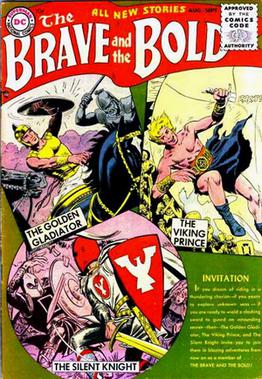
The Brave and the Bold is a comic book series published by DC Comics as an ongoing series from 1955 to 1983. It was followed by a reprint miniseries in 1988, two original miniseries in 1991 and 1999, and was revived as an ongoing anthology title in 2007 and 2023. The focus of the series has varied over time, but it most commonly features team-ups of characters from across the DC Universe.

The House of Mystery is the name of several horror, fantasy, and mystery comics anthologies published by DC Comics. It had a companion series, The House of Secrets. It is also the name of the titular setting of the series.

Sandman Mystery Theatre was an ongoing comic book series published by Vertigo Comics, the mature-readers imprint of DC Comics. It ran for 70 issues, one annual, and a cross-over special between 1993 and 1999 and retells the adventures of the Sandman, a vigilante whose main weapon is a gun that fires sleeping gas, originally created by DC in the Golden Age of Comic Books. In a similar vein to Batman, the Sandman possesses little to no superhuman powers, though he has minor precognitive abilities through his prophetic dreams, and relies on his detective skills and inventions.

The Presence is a fictional character in comic books published by DC Comics. The character debuted in More Fun Comics #52, and was created by Jerry Siegel and Bernard Baily.

Prince Ra-Man is a fictional comic book magician published by DC Comics. Mark Merlin first appeared in House of Secrets #23, and was created by Mort Meskin. Prince Ra-Man first appeared in House of Secrets #73, and was created by Jack Miller and Bernard Baily.
Dean Ormston is a British born comic book artist. His most notable work has been for the British comic 2000 AD and for DC Comics' Vertigo imprint.
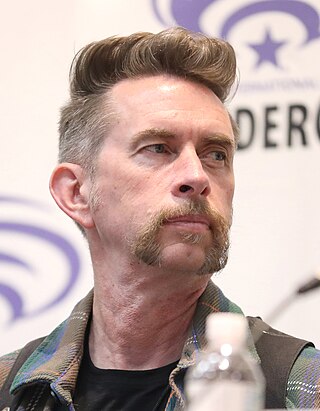
Steven T. Seagle is an American writer who works in the comic book, television, film, live theater, video game and animation industries.
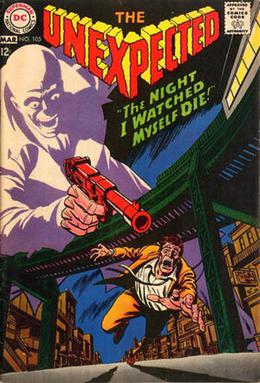
The Unexpected is a fantasy-horror comics anthology series, a continuation of Tales of the Unexpected, published by DC Comics. The Unexpected ran 118 issues, from #105 to #222. As a result of the so-called DC Implosion of late 1978, beginning in 1979 The Unexpected absorbed the other DC horror titles House of Secrets, The Witching Hour, and Doorway to Nightmare into its pages. Horror hosts featured in The Unexpected included The Mad Mod Witch, Judge Gallows, Abel, and the Witches Three.

Weird Mystery Tales is a mystery horror comics anthology published by DC Comics from July–August 1972 to November 1975.
John Edmond Sparling, was a Canadian comics artist.
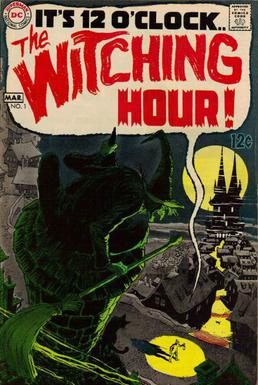
The Witching Hour is an American comic book horror anthology published by DC Comics from 1969 to 1978.
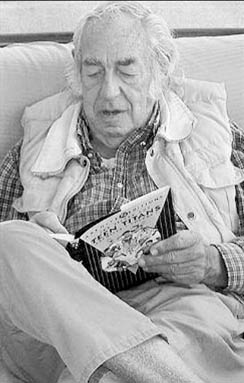
Robert Gilbert Haney, Jr. was an American comic book writer, best known for his work for DC Comics. He co-created the Teen Titans as well as characters such as Lance Bruner, Metamorpho, Eclipso, Cain, and the Super-Sons.

House of Mystery is an American occult and horror-themed comic book anthology series, based on the series The House of Mystery that ran from 1951 to 1983. The writers, Bill Willingham and Lilah Sturges, debuted the series in July 2008 under the Vertigo imprint of DC Comics.
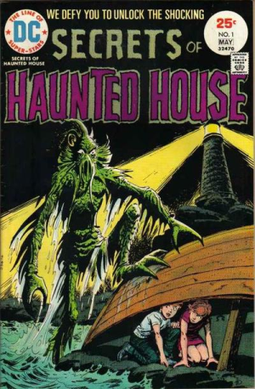
Secrets of Haunted House was a horror-suspense comics anthology series published by American company DC Comics from 1975 to 1978 and 1979 to 1982.
The character the Swamp Thing has appeared in seven American comic book series to date, including several specials, and has crossed over into other DC Comics titles. The series found immense popularity upon its 1970s debut and during the mid-late 1980s under Alan Moore, Stephen Bissette, and John Totleben. These eras were met with high critical praise and numerous awards. However, over the years, the Swamp Thing comics have suffered from low sales, which have resulted in numerous series cancellations and revivals.
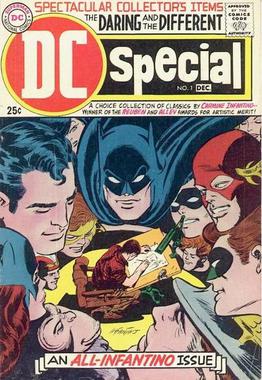
DC Special was a comic book anthology series published by DC Comics originally from 1968 to 1971; it resumed publication from 1975 to 1977. For the most part, DC Special was a theme-based reprint title, mostly focusing on stories from DC's Golden Age; at the end of its run it published a few original stories.

















